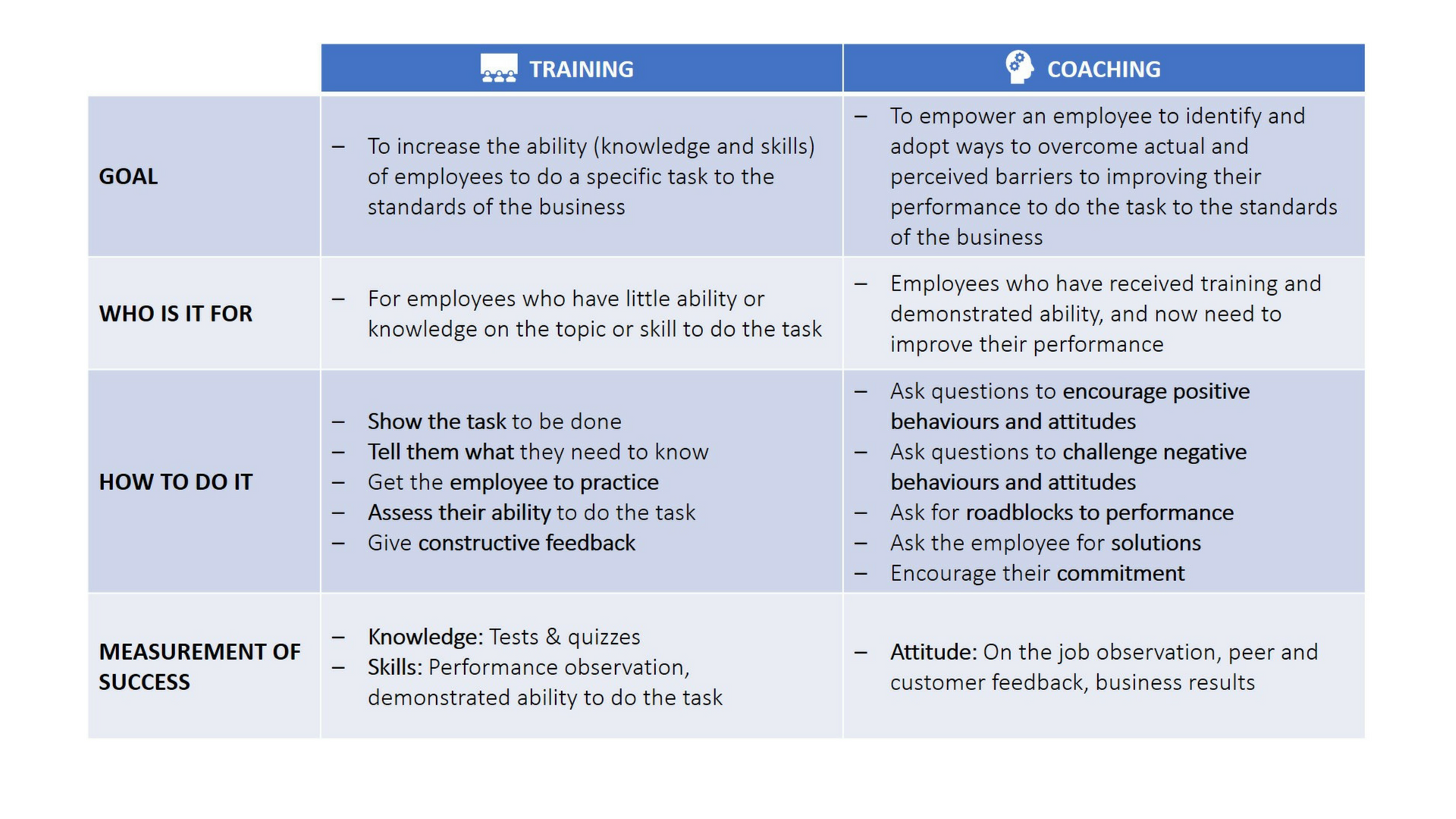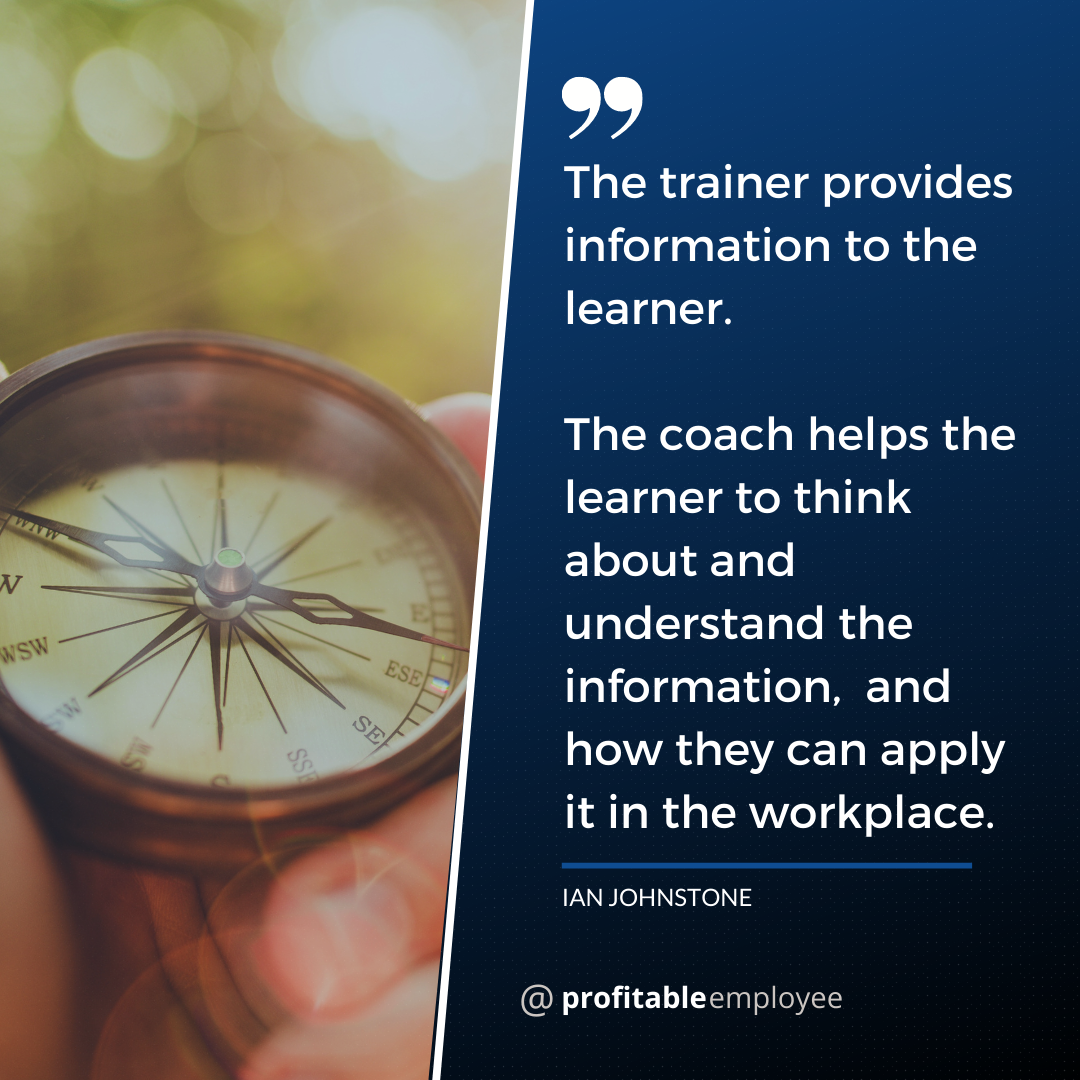If the fundamentals of Customer Service are so easy why do most training programmes fail?
One of the biggest challenges to running a customer service programme is that each of your employees has different levels of:
- ABILITY (knowledge and skills),
- ATTITUDE (how they think about customer service), and
- EXPERIENCE (either as an employee delivering customer service or having been a customer themselves).
This causes problems because a one size fits all approach to training doesn’t work.
Imagine you run a restaurant and you deliver a great product but your customer service scores are ordinary or poor, and you decide you need to do something to improve them.
What would happen if went to your experienced team members and told them that you were going to deliver a customer service training?
How would they respond?
Would they
- cheer and congratulate you for the great news, or would they
- roll their eyes, mutter under their breath, or just tell you outright ‘What a waste of time it would be’
Most likely the latter.
On the flip side, what happens if you tell your inexperienced staff they are going to be doing customer service training that involves lots of roll-playing and group activities to help them create real life scenarios to help them deal with customers.
Instant shock, resistance and even in some cases fear.
Why training by itself doesn't work
The reality is if you put your entire team through the same sheep dip style training programme, your only guarantee is, that it will not work.
You also run the risk of demotivating the experienced employees who due to their influence in the team, can become negative about the training, which influences how and what the new employees learn.
So, what’s the solution?
When you design any type of customer service programme you need to consider your team’s needs and expectations.
- Inexperienced employees need more hands on and direct training where you provide all the information and directions they require.
- Experienced employees who already know what to do and how to provide great service, however, for what ever reason may not be doing it, so you need to find out why and help them to resolve it.
To do this there are two main types of learning activities you can choose:
- Customer Service Training – When you need to impart new knowledge and skills to the employees (usually the inexperienced ones).
- Customer Service Coaching – When you help employees who have received the training and are capable to do the task to improve their performance.
You can see in the table below how and when to use each learning activity.

When do you stop training and start coaching?
As we have discussed training is great for introducing new topics and approaches to employees, however, without repetition, reinforcement and practice employees will either forget, fail or choose not to use what they have learned at work.

The key to ensuring all employees can and will provide consistently excellent customer service is to:
- build their ABILITY (knowledge and skills) by providing training when needed,
- reinforce and encourage their ATTITUDE (why they choose to do the right thing) through one to one coaching, and giving constant feedback.
And, over time and with the right EXPERIENCE, they will soon learn the value of delivering exceptional customer experiences, which will motivate them to continue to do it.

The reality is that adults irrespective of their experience are always learning, either something new or reinforcing what they already know or think they know.
Meet each of your employees learning needs and expectations and you are well on the way to helping them to generate great customer experiences.
Do you like what you have read? Leave a comment below.

